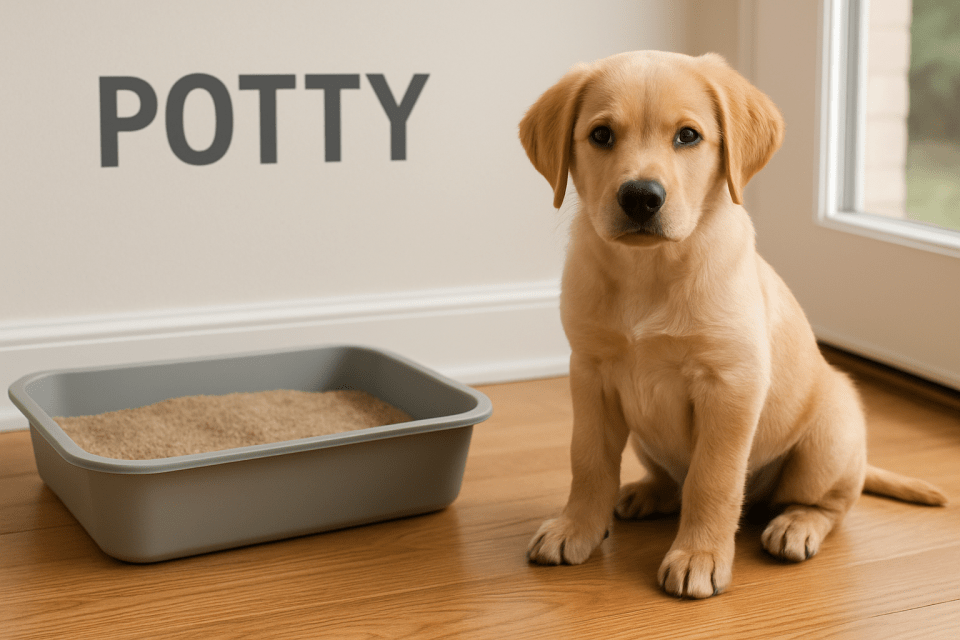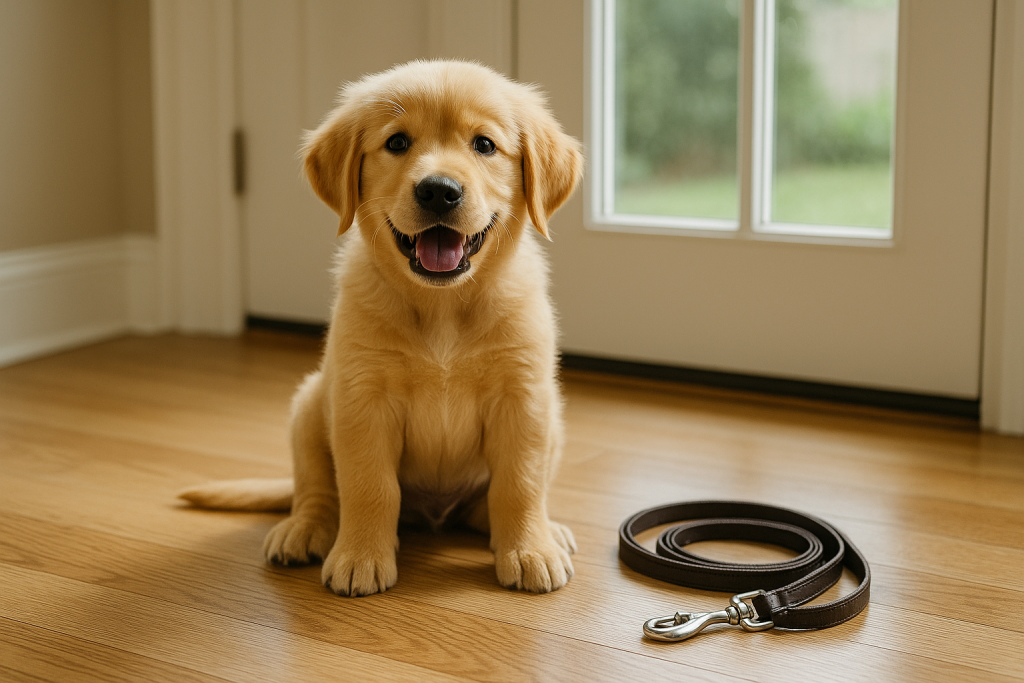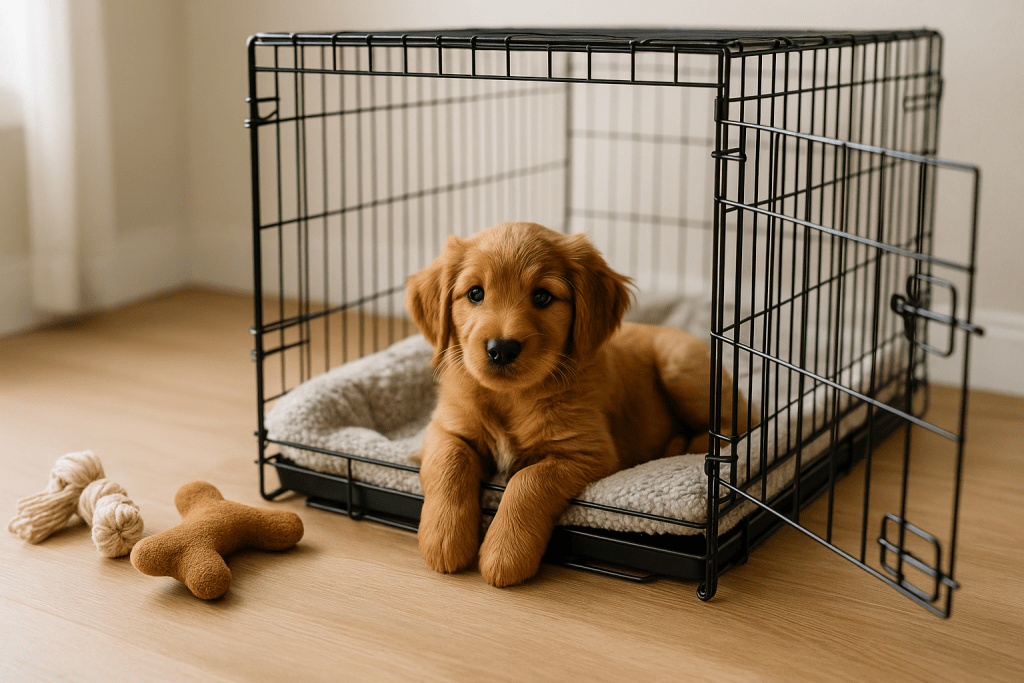
How to Toilet Training Your Dog: A Complete Guide for Every Owner
Toilet training is one of the most essential steps in raising a well-behaved and happy dog. Whether you’ve adopted a puppy from a humane shelter or brought home an adult rescue, understanding how to guide your furry friend toward proper toilet habits will make your life, and theirs, much easier. Beyond the practical side, toilet training also builds trust, discipline, and a strong emotional bond between you and your dog.
Why Toilet Training Matters
Dogs, like people, prefer a clean environment. Proper toilet training teaches them where it’s appropriate to go and prevents confusion that can lead to accidents around the home. It’s part of responsible dog ownership, much like vaccinations, regular vet visits, and daily walks on the leash.
For puppies, it’s about forming early habits. For adult dogs, especially those rescued from shelters or kennels, it’s about relearning behaviors in a stable, loving home. Either way, patience and consistency are the real keys to success.

When to Start Toilet Trainin
You should begin toilet training as soon as your new dog arrives home. Puppies can start as early as eight weeks old. They don’t have full bladder control until around 12 months, which means they need more frequent bathroom breaks than adult dogs.
Adult dogs adopted from shelters might already have partial training, but some need to start from scratch. It’s normal for rescued or rehomed dogs to regress temporarily, new surroundings can trigger confusion. Keep routines consistent, and progress will follow.
Setting Up the Right Space
Creating a safe, easy-to-clean area for your dog is crucial. Choose a specific toilet area, a patch of grass outside or a designated spot in your yard. Consistency helps your dog recognize where to go.
If you live in an apartment, you can use an indoor potty pad or artificial grass mat during early stages, then gradually transition outdoors. Always ensure your dog has access to this area quickly, keep the path short, safe, and leash-friendly.
Table 1: Recommended Toilet Training Setup
| Item | Purpose | Example |
|---|---|---|
| Leash | Control during potty trips | Nylon or retractable leash |
| Training treats | Reward after success | Soft chicken bites |
| Designated area | Habit-building consistency | Backyard, garden corner |
| Cleaning supplies | Hygiene after accidents | Enzymatic cleaner, wipes |

Recognizing When Your Dog Needs to Go
Learning your dog’s body language is one of the most important parts of toilet training. Here’s what to look for:
- Sniffing the ground or circling in one area
- Whining or pacing near the door
- Sudden restlessness after waking or playing
- Squatting or lifting a leg unexpectedly
Puppies should be taken outside:
- After waking up
- After meals
- After play sessions or excitement
- Before bedtime
- Before and after being left alone
For young puppies, go out every 45 – 60 minutes, depending on their age.
Establishing a Toilet Training Routine
Dogs learn best through repetition. Create a predictable toilet training schedule that fits your lifestyle and your dog’s natural rhythms.
Table 2: Sample Toilet Training Schedule for Puppies
| Time | Action |
|---|---|
| 7:00 AM | Take dog outside after waking up |
| 8:00 AM | After breakfast – toilet break |
| 10:00 AM | Post-play potty |
| 12:00 PM | Midday outdoor time |
| 4:00 PM | After walk or excitement |
| 7:00 PM | After dinner |
| 9:00 PM | Before bedtime |
Each successful outing reinforces the habit. Reward with gentle praise, treats, or playtime to make them associate toileting in the right place with positive feelings.
Using Verbal Cues and Rewards
Dogs thrive on routine and association. When your dog begins to go in the right place, say a consistent cue like “toilet” or “go potty.” Over time, they’ll connect that word with the action.
Always reward your dog immediately after they finish, not before. Rewards can include treats, verbal praise, or a few minutes of play. Avoid long delays, dogs associate actions with outcomes within seconds.

What to Do When Accidents Happen
Accidents are normal during toilet training. Never scold or punish your dog, it only creates fear and confusion. Instead:
- Calmly interrupt if caught in the act.
- Take them outside to the designated spot.
- Praise them if they finish there.
For cleanup, use an enzymatic cleaner or a warm mix of biological washing powder and water to eliminate odors. Avoid ammonia-based cleaners since they can resemble the scent of urine and encourage repeat accidents.
If your dog keeps having accidents, consult a veterinarian to rule out medical issues like urinary infections or bladder weakness.
Crate Training and Toilet Training
A crate, when used humanely, can help with toilet training. Dogs naturally avoid soiling their sleeping area, so it teaches bladder control.
Tips for Crate-Based Toilet Training:
- Choose the right size crate, enough room to stand and turn, but not too big.
- Don’t leave your dog crated for more than a few hours.
- Take them outside immediately after opening the crate.
- Keep the crate clean, cozy, and positive, never use it for punishment.

Common Toilet Training Challenges
Even with consistent effort, challenges can happen. Understanding why helps you stay patient.
1. Separation Anxiety
Dogs who toilet indoors when left alone may have separation-related behavior. They’re not being naughty, they’re anxious. Slow desensitization, short departures, and calming toys can help.
2. Adopted or Rescue Dogs
Dogs adopted from shelters or kennels may have been living in small spaces where toileting indoors was unavoidable. Use positive reinforcement and patience. Reward every success to rebuild trust.
3. Medical Reasons
If accidents occur suddenly in a previously trained dog, contact your veterinarian. Conditions like urinary tract infections, incontinence, or stress may be involved.
Positive Reinforcement Over Punishment
Humane training methods always work better. Reward-based toilet training helps your dog feel secure, loved, and eager to please. Punishment, shouting, or forcing the dog to “look” at accidents damages trust.
Dogs learn fastest in supportive environments where praise replaces fear. This is why humane societies and professional dog training classes emphasize kindness, consistency, and structure.
How Long Does Toilet Training Take?
There’s no fixed answer, every dog is different. Puppies may take a few weeks to learn, while adult rescues can take several months. The key is consistency.
Keep your expectations realistic: some breeds, like Retrievers and Terriers, may learn faster than others. Remember, every successful outdoor trip is a step closer to full independence.
Indoor vs Outdoor Toilet Training
If you live in an apartment, indoor toilet training with pads or trays can be a helpful start. Gradually move the pad closer to the door until your dog learns to signal to go outside.
Outdoor training is ideal long-term, dogs prefer natural surfaces and enjoy the routine of daily walks on the leash.
Helping Dogs That Regress
Sometimes, trained dogs suddenly start toileting indoors again. This can happen after moving houses, a change in schedule, or illness. Stay calm, revisit the basics, and re-establish the routine. Don’t assume disobedience, stress and adjustment periods are common.
If regression continues, consult your vet or a certified canine behaviorist for guidance. They can recommend tailored techniques without risking your dog’s emotional wellbeing.
Building Trust Through Routine
Successful toilet training isn’t just about cleanliness, it’s about communication and care. Each time you walk outside together, reward the right behavior, and show patience, you strengthen the bond between you and your furry family member.
By using humane methods, positive reinforcement, and guidance from your vet or dog training experts, your dog will learn not only where to go, but that they can always trust you in the process.
Final Thoughts
Toilet training is a journey every dog owner experiences. It requires time, consistency, and compassion. Whether your dog is a playful puppy or a rescued adult finding their forever home, you can achieve lasting success through kindness and routine.
Remember, every dog can learn. With love, patience, and the right approach, those little “accidents” will soon be replaced with proud tail wags at the door, ready for the next bathroom break.
FAQs About Toilet Training Your Dog
1. What is the best age to start toilet training a puppy?
You can begin toilet training as soon as your puppy arrives home — usually around 8 weeks old. The earlier you start, the easier it becomes to build consistent habits. Puppies have smaller bladders, so they’ll need frequent trips outside, especially after meals, naps, and playtime.
2. How long does toilet training usually take?
The length of toilet training varies based on your dog’s age, breed, and consistency in routine. Most puppies learn within 4–6 weeks, while adult rescues may take a few months. Staying patient, rewarding success, and keeping a predictable schedule help speed up the process.
3. What should I do if my dog keeps having accidents indoors?
Accidents are part of the toilet training process. Never punish your dog. Instead, calmly clean the spot with an enzymatic cleaner to remove odors and prevent repeat accidents. If the issue continues, consult a veterinarian to rule out medical causes like urinary infections or stress.
4. Can crate training help with toilet training?
Yes, crate training can support toilet training when used humanely. Dogs naturally avoid soiling their sleeping area, so a crate helps develop bladder control. Just make sure the crate isn’t used as punishment and that your dog is taken outside regularly for breaks.
5. Why does my toilet-trained dog still have accidents when left alone?
If a toilet-trained dog has accidents when left alone, it could be separation anxiety. Many dogs feel stressed without their owners and lose control. Try gradual departures, calming toys, and a set routine. If it persists, seek help from a certified canine behaviorist or vet.
For more expert advice on toilet training and understanding your dog’s behavior, you can explore this helpful guide from the RSPCA. If you’re also considering your pet’s long-term health and planning for neuter surgery, check out our detailed blog on What Is the Best Age to Neuter a Dog? at Animal Care Clinic.

0 Comments